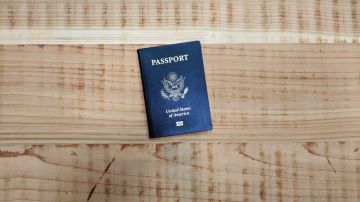13 of the Most Effed Up Immigration Acts in U.S. History
It’s important to know history to fully understand the things that are happening now

Photo: Unsplash/@jeremydorrough
It’s important to know history to fully understand the things that are happening now. This is because often, history repeats itself, and/or what we experience today resulted from what happened yesterday. The past, with its events and narratives, informs us. A perfect example of a repetitive history is the lengthy collection of unfair, racist, and discriminatory immigration laws in the United States.
Immigration acts have been drawn up for the country since the 1670s, when England barred Catholics and other non-Christians from parliamentary naturalization. Unfair laws like these continued, to protect one group of people, while ostracizing several others. Let take a look at 13 such effed immigration acts, that worked against people of color, certain Europeans, and other groups. The saddest part was that there were so many to choose from.
wp_*posts
Naturalization Act of 1790
The Naturalization Act of 1790 was created to naturalize immigrants who were “free white persons of good character.” This excluded everyone else, although free blacks were allowed citizenship in certain states, at the state level. The Naturalization Act of 1870 extended naturalization to “aliens of African nativity and to persons of African descent.”
wp_*posts
Alien and Sedition Acts (1798)
https://www.instagram.com/p/BZHr2tJlYkd/
The Alien and Sedition Acts were four bills passed in 1798: the Naturalization Act, the Alien Friends Act of 1798, the Alien Enemy Act of 1798, and the Sedition Act. Some messed up things these acts contain include prohibiting public opposition to the government, adding nine years to the residency requirement for citizenship, and allowing the president to imprison or deport “dangerous” immigrants.
wp_*posts
Page Act (1875)
The Page Act was the nation’s first restrictive immigration law. It was worded to deny entry to “criminals, convicts, and prostitutes,” focusing on “immoral” Chinese women. This act extended to basically deny entry to all Asian women who wanted to immigrate to the U.S.
wp_*posts
Chinese Exclusion Act of 1882
The Chinese Exclusion Act took the hatred one step further, also denying Chinese men the ability to immigrate to America. Angel Island’s immigration station processed over 175,000 Chinese and 117,000 Japanese people (detaining some for up to two years). The Chinese Exclusion Act wasn’t repealed until 1943.
wp_*posts
Anarchist Exclusion Act (1903)
https://twitter.com/Anta1os/status/1245737633919221760?s=20
Can you believe that the Immigration Act of 1903, also known as the Anarchist Exclusion Act, excluded people with epilepsy, those with mental health issues, and the poor (“beggars”) from entering the country? Epilepsy was incorrectly categorized as a mental illness then; the act also specified that if someone had “been insane within five years,” or had two or more “attacks of insanity,” they would be denied entry. Prostitutes or anarchists were also excluded.
wp_*posts
Naturalization Act of 1906
Prior to 1906, an immigrant could naturalize at any court, at the city, state, or federal level. Therefore, there are only a few federal courts with records prior to the Naturalization Act of 1906. One such example is this Charleston declaration of William Bornemann from 1879. pic.twitter.com/XS4xCswlJc
— NationalArchivesATL (@atlantaarchives) June 13, 2020
The Naturalization Act of 1906 was another unfair, discriminatory immigration law. It required that immigrants who wanted to become citizens had to learn English.
wp_*posts
Expatriation Act of 1907
1.Under the Expatriation Act of 1907, my 2nd gen American great-great grandmother lost her citizenship when she married an Italian immigrant pic.twitter.com/wTG36y0cq0
— Jamie Kenney (@LaComtesseJamie) January 9, 2017
The Expatriation Act of 1907 is a perfect example of both a horrible immigration law, and anti-feminism. Because of this act, if a naturalized citizen lived for two years in his homeland, or five years elsewhere outside the United States, he or she would lose citizenship. Also, women who married non-citizens also lost their citizenship; this was not the case for men.
wp_*posts
Immigration Act of 1917
The hatred just continued from there. The Immigration Act of 1917, also known as the Asiatic Barred Act, and the Literacy Act, created a Asiatic Barred Zone, from which no one could immigrate to the U.S. It also prevented alcoholics, those who were illiterate, and gay people (who were considered to be mentally ill then) from entering the country.
wp_*posts
Emergency Quota Act (1921)
8. Following the Act of 1917, the U.S. passed the Emergency Quota Act of 1921, which severely limited the ability of the U.S. Muslim population to grow by means of new immigration. See this Pew Research Center link for more on U.S. immigration history: https://t.co/fYW1KAFRQg pic.twitter.com/7hbL6d980I
— Dr. Craig Considine (@CraigCons) February 17, 2018
The Emergency Quota Act placed limits on how many people could immigrate to the United States from each country. For each nation, 3% of the number of immigrants already in the U.S. were allowed in each year. This obviously was beneficial to bigger communities in the United States, and kept smaller ones out. The act didn’t put limitations on immigration from Latin America.
wp_*postsAsian Exclusion Act of 1924
2) The public focus on the 1924 Immigration Act revolved around its anti-Asian measures, the portion of the law known as the Asian Exclusion Act. It forbade all further immigration from Japan, China, and every other Asian nation. pic.twitter.com/7Gj1bISEJ9
— David Neiwert (@DavidNeiwert) February 28, 2019
Also known as the Immigration Act of 1924, the Johnson-Reed Act, etc., the Asian Exclusion Act continued the assault on Asians wanting to immigrate to the U.S. The quota from countries was now lowered to 2%, later replaced with regulation by “national origins.” The goal was the restriction of immigration from Japan and other Asian countries, Southern Europe, and Eastern Europe. wp_*posts
The Philippines Independence Act (1934)
wp_*posts
Immigration and Nationality Act (1952)
Multiple U.S. Immigration law experts say that, because of the #Immigration and Nationality Act of 1952, #Trump.. pic.twitter.com/pzGRbJe9bD
— Leslie Marshall (@LeslieMarshall) November 15, 2016
Although the Immigration and Nationality Act, also known as the McCarran-Walter Act, improved some parts of previous acts, it still kept certain groups of people out of the country, unfairly. One of these groups were “suspected subversives,” including Gabriel Garcia Marquez, Carlos Fuentes, and Pablo Neruda.
wp_*posts
Illegal Immigration Reform and Immigrant Responsibility Act of 1996
Even legal immigrants (e.g. green card holders) can't receive welfare according to the Personal Responsibility and Work Opportunity Reconciliation Act of 1996. Some states like California allow documented and undocumented immigrants to get food stamps. https://t.co/F30flchrMk pic.twitter.com/ey0IhuNgGp
— Sarlacc_Attack (@SnarlakAttack) November 18, 2018
Bill Clinton has done some cool things in his life—the Illegal Immigration Reform and Immigrant Responsibility Act of 1996 is not one of them. The act punished undocumented immigrants by keeping them from returning to the U.S. for anywhere from three years to 10. It also took away in-state tuition from undocumented students, made minor offenses like shoplifting deportable ones, and gave the OK to add to the existing border fence.

















